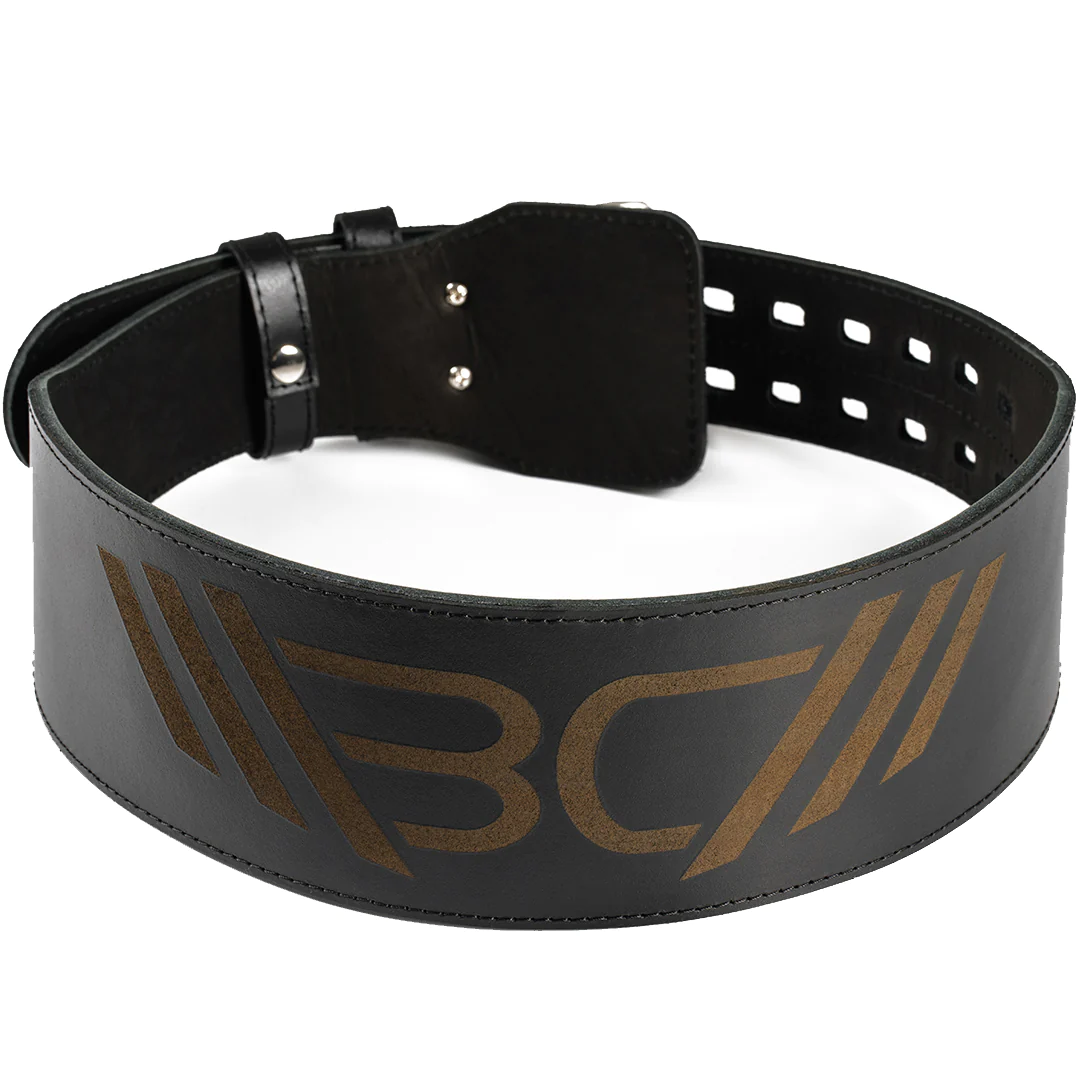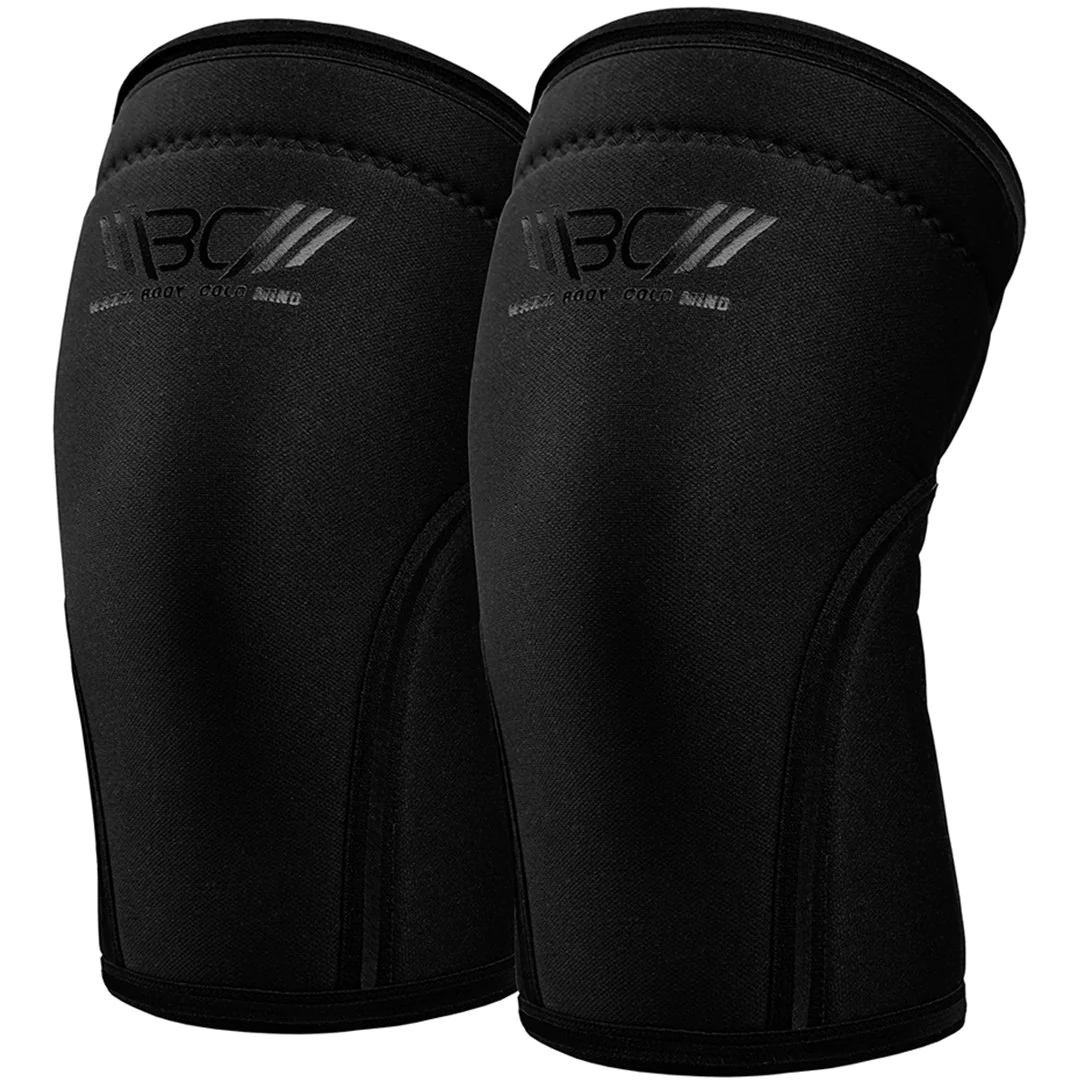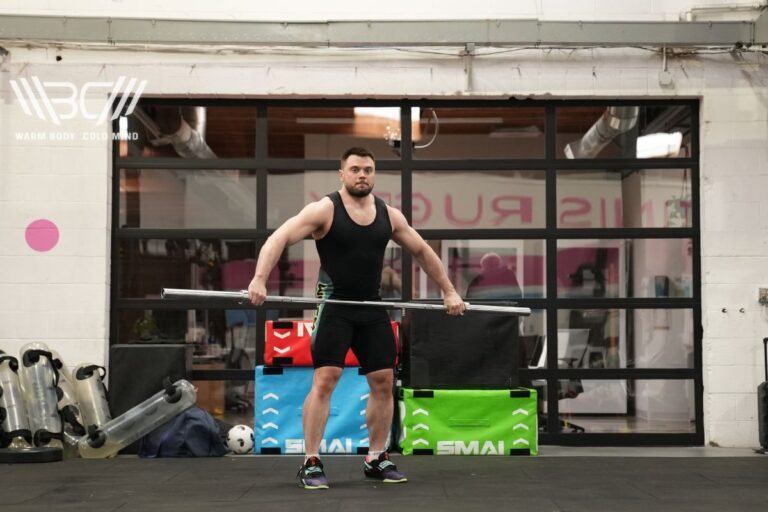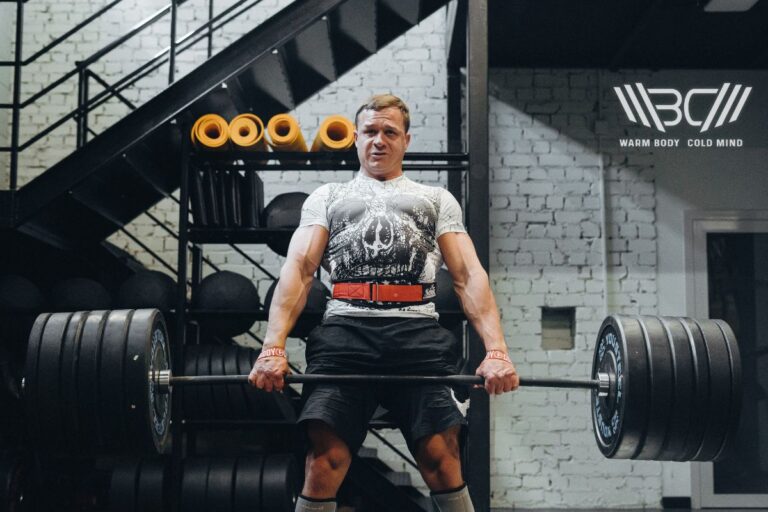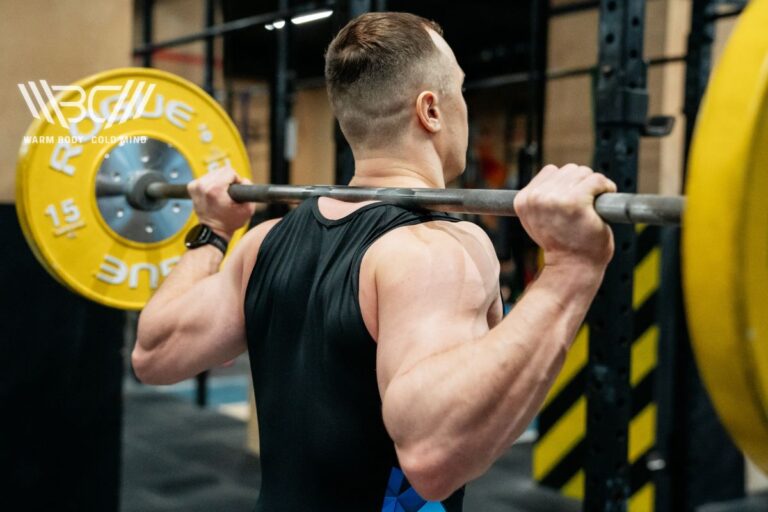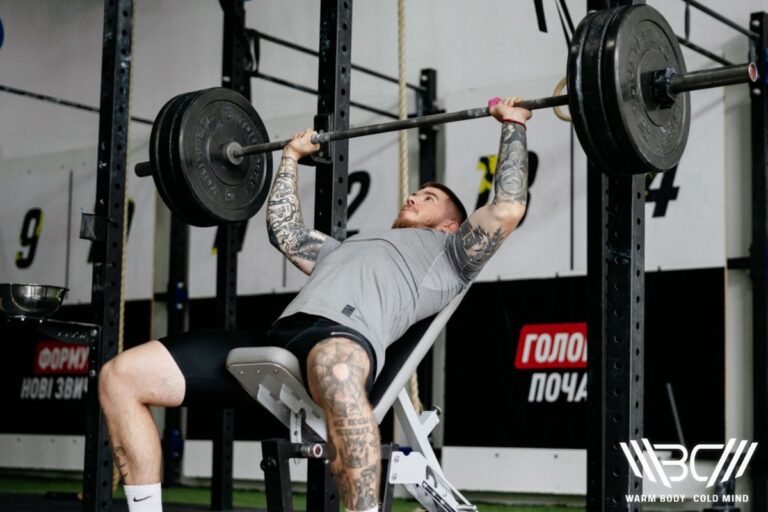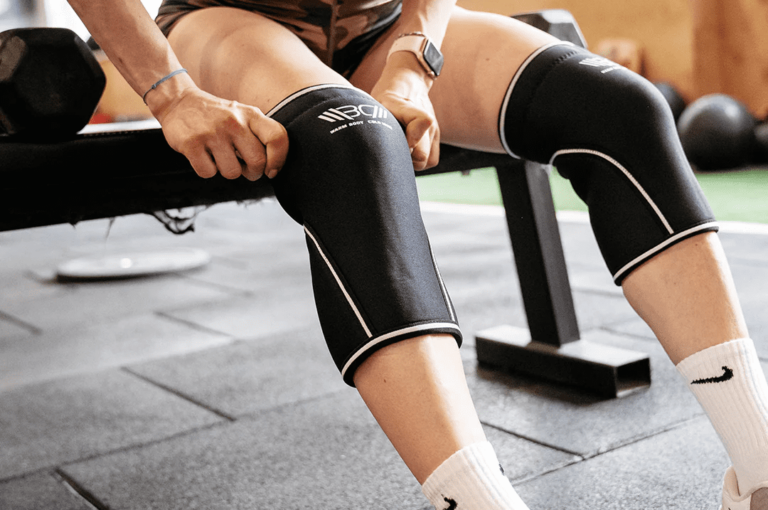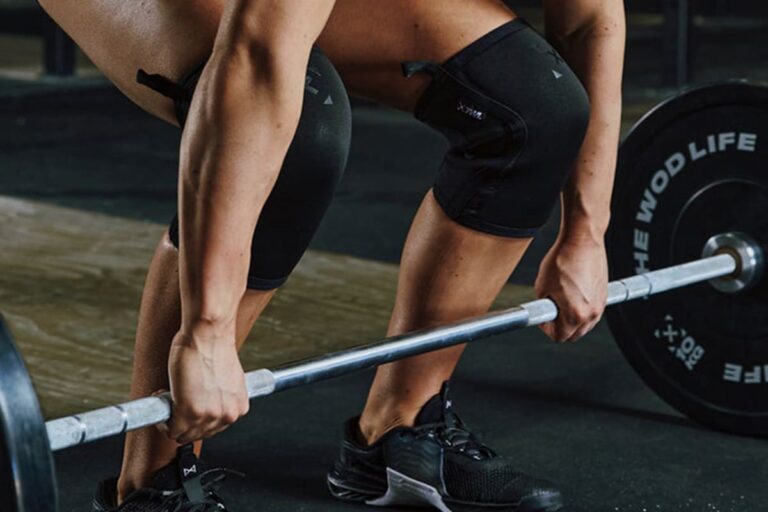How Squatting With Plates Under Heels Works
So, you saw somebody squatting with plates under heels and are wondering what it’s all about. Doing squats on plates, also known as elevated heel squats or heel elevated squats, is meant to achieve the same effect as wearing weightlifting shoes, which have elevated heel plate inserts.
Except, this way is often more accessible to people, as you don’t have to buy the shoes and can just use a spare pair of plates. This article will help explain why elevated squats work and how to employ them. Before diving into the details, here’s a quick summary:
Squatting With Plates Under Heels – Those who prefer elevated squats can squat standing on plate pairs in place of lifting shoes. The raised heel helps with limited ankle dorsiflexion (forward bend), keeps the trunk and torso upright, and increases knee flexion, which is helpful for deeper squats.
Squats With Plates Under The Heels
Elevated heel squats have been a concept for as long as modern squatting has existed, so, at least a century at this point. As weightlifting evolved as a sport during the 1900s, people started to realize that squatting with an elevated heel could enhance performance. Since then, professional weightlifters have used specialized shoes that elevate the users’ heel.
Squatting with plates under heels is simply an evolution of this concept. The plates serve as a platform to elevate the heels on, mimicking the effects of specialized shoes. Furthermore, weight plates come in various sizes (thicknesses), which allows you to pick and choose the elevation level that best suits your comfort or preferences on the day.
4 Benefits Of Squatting With Plates Under Your Heels
Now you understand the basic principles of doing squats with plates under heels. Further, we’re going to take a look at some scientifically-backed benefits of performing elevated squats.
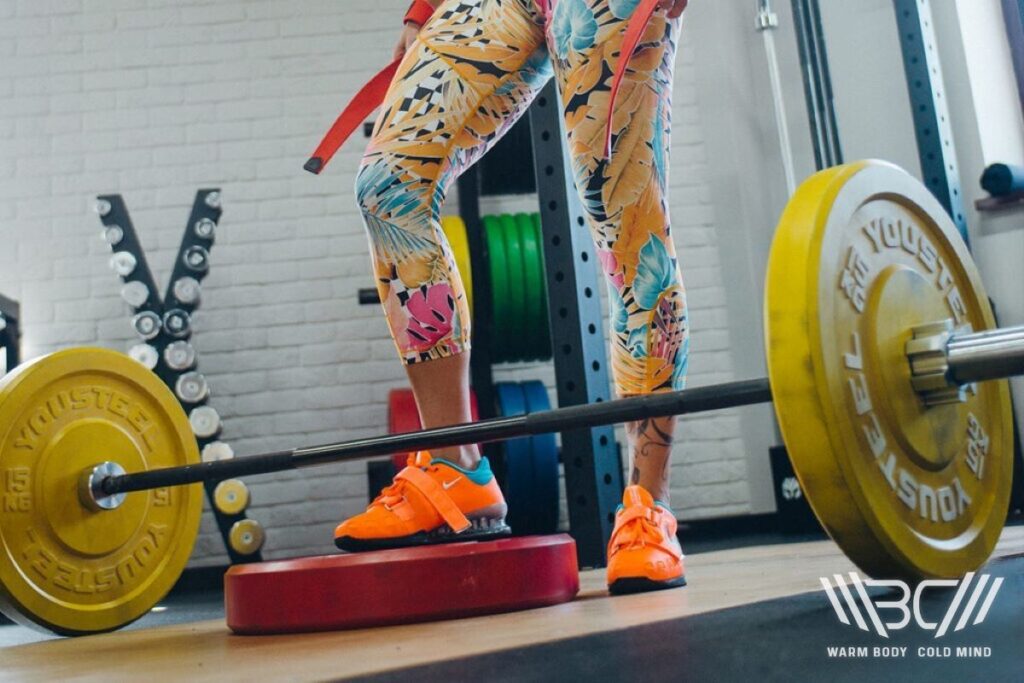
✅ More Upright Posture
The first effect people notice when trying elevated squats on plates is how the raised heel naturally pushes the hip and trunk area forward, which also straightens the spine.
The result is a more upright posture throughout the lift. You can try this yourself right now — stand on the balls of your feet and see how your pelvic area pushes forward and your shoulders lean back for balance. This effect has been recorded in multiple studies, such as this one in which the elevation block used is 2.5 cm or 25 mm tall.
Additionally, you can always add a weightlifting belt for added spinal support. Weightlifting belts work by surrounding your core area and creating intra-abdominal pressure when you breathe in and brace into them. This effect can also help reduce exercise forces felt on your spinal discs. In this case, we highly recommend the Warm Body Cold Mind Leather Weightlifting Belt.
We crafted it from premium A-grade leather, it’s 6 mm thick for the ideal balance of support and comfort. Featuring a virtually indestructible double-prong stainless steel buckle, it tapers at the front for better breathability. It’s available in classic black leather plus eight other stylish designs.

Enhance your strength training with Warm Body Cold Mind leather weightlifting belt providing exceptional support and durability.
✅ Reduced Joint Pressure
When you squat, pressure builds up in your joints, most notably the hips, ankles, and knees. According to research, elevating your heel using weightlifting shoes increases knee and hip flexion, while also reducing ankle flexion. In basic terms, this allows for greater and more comfortable hip and knee bending, helping you to squat deeper, without pushing your ankles forward.
This not only reduces pressure on the hips, knees, and ankles but also helps address common issues with joint mobility such as limited ankle dorsiflexion (forward lean), helping you maintain a better posture throughout the lift. The same effect, of course, can be achieved with an elevated platform, such as doing squats on plates.
If you experience pressure in your knees when you squat, you should also look into additional knee protection. Knee sleeves are essential for serious weightlifters. Sleeves work by adding compression and warmth around the joint, keeping the structure solid and promoting blood flow.
Our best athletes use our very own Warm Body Cold Mind 7mm Knee Sleeves. They’re made from breathable and flexible neoprene, with a contoured shape that fits well over the knee caps. The sleeves are unisex and available in various sizes (from S to 3XL).

7mm Weightlifting Knee Sleeves
Discover the ultimate support with Warm Body Cold Mind knee sleeves providing stability and comfort.
✅ Increased Muscle Recruitment
Squats with heels on plates will alter muscle recruitment from the traditional exercise variant, which can be beneficial especially if you train squats with lower body development in mind. According to research, muscles that see an increase in activity with elevated squats include the vastus lateralis, biceps femoris, and gastrocnemius muscles, which belong to the quadriceps, hamstrings, and calves, respectively.

Pro Tip:
The average weightlifting shoe heel stack is roughly 20-25 mm. Meanwhile, the thickness of standardized 11 lbs/5 kg Olympic plates is roughly the same. In other words, their heel stack height would be nearly identical, so you can use these plates in place of commercial lifting shoes.
✅ Less Spinal Load
A study looking at the effects of squats from an elevated surface used both an inclined board and weightlifting shoes to simulate the effect. The results showed that elevated squats had a reduced moment around the L4 and L5 spinal discs, located on the Lumbar vertebrae AKA the lower back.
Furthermore, among the tested athletes, this effect was showcased primarily in the beginner group. This suggests that athletes with less experience with the exercise and technique are safer when performing elevated squats.
2 Disadvantages Of Squatting With Plates Under Heels
Despite numerous advantages, squats with plates under heels aren’t always recommended. Here are some situations to be wary of:
❌ Potential Instability
The most obvious concern when trying elevated squats on plates is the potential instability that might occur as the result of your feet not being firmly planted on the ground. Plates are obviously not made for this purpose, so not everybody will find the foot angle stable enough, particularly if you haven’t tried this sort of thing before. This is why weightlifting shoes have a heel-to-toe drop meant to ease the curve.
❌ Pain/Injury In The Lower Leg
Female lifters will know this all too well from wearing high heels in real-life scenarios. Spend any time on the balls of your feet with a heel platform and you might start to feel pain and tingling in the lower leg.
Some examples of what you might experience include straining your calves and shins, inflaming your foot arch, Achilles tendinitis, etc. Add to that the weight resistance of a barbell during squats and the potential for ankle and knee sprains, for example, goes up.
Who Shouldn’t Do Squats With Plates Under The Heels?
Based on what we’ve learned so far, who should avoid doing squats with plates under heels? The first obvious group that comes to mind is anyone who has existing joint issues that might get further exposed due to the altered hip, knee, and ankle position during an elevated squat.
In such cases, it’s crucial to consult your doctor or physical therapist before attempting even just a basic squat, and paying attention to signs of pain and discomfort if you decide to try it. Furthermore, the elevated heel position may be problematic if you’re having difficulties balancing through a regular squat.
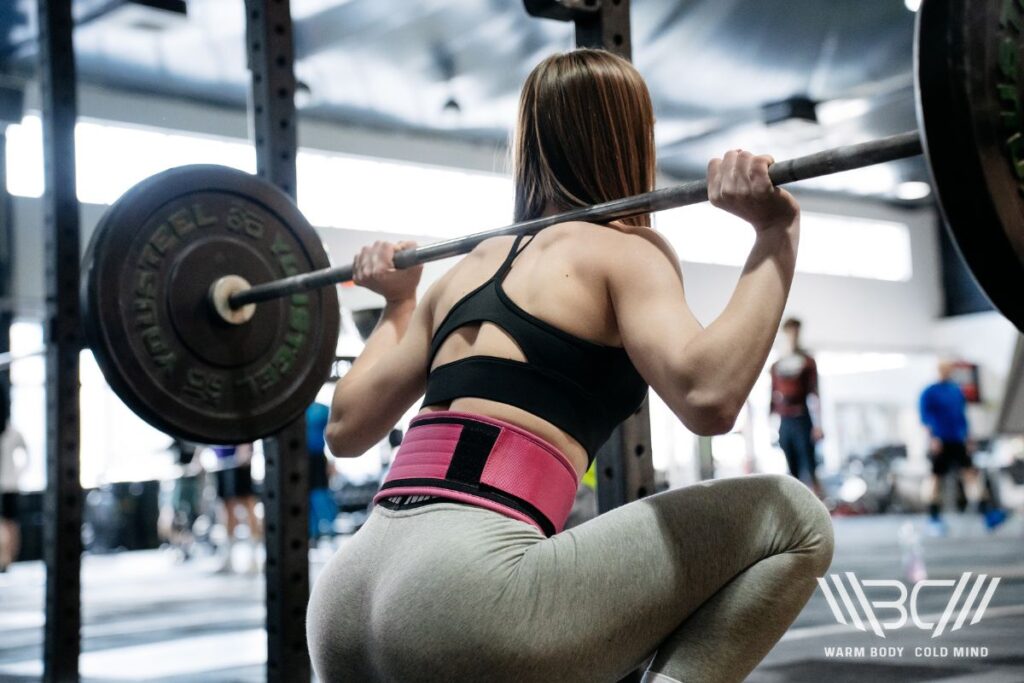
Even though an elevated squat can be helpful for beginners, reducing pressure off of hips, ankles, and the lower back especially, it’s still important to achieve proper exercise technique before going into variations. Nowadays, you can learn any exercise online, but it’s always a good idea to get a performance assessment from a professional coach or fitness trainer.
Subscribe!
The latest reviews of must-have home gym training equipment, apparel, and supplements that will enhance your performance and bring you new results.
How To Do Squats With Plates Under Heels Correctly
Here’s a step-by-step to setting up your elevated squats on plates safely and correctly:
- Choose a flat and stable surface for your squat, preferably a squatting area with a rack system if you’re using a barbell
- Place the plates behind you at shoulder width apart
- Step on the plates with your heel to ensure the size and angle are comfortable
- Try a few bodyweight squats to see if it feels stable and grounded
- Approach the weight from the front with your elevating plates behind you
- Pick up the barbell (or whatever weight you’re using) then slowly step back foot by foot on your plates
- Perform your squats
- After you’re done, slowly walk off the plates foot by foot and then rack your bar

Pro Tip:
You want your plates to be no more than 2-3 small steps away from you once you mount the weight so you can safely perform the squat walkout back in on them. This distance also helps to avoid slipping on them when racking the bar again (or dismounting the weight by other means).
1. Choosing The Plate Size
The default heel height on weightlifting shoes is 21-24 mm, roughly 0.8-0.95 inches. Based on standardized Olympic weight plate measurements, most people squat standing on plate sizes 11 lbs/5 kg, which are roughly 22 mm/0.85” thick. This serves as a starting reference; however, the height you choose depends on your comfort level.
A person of smaller stature may struggle to balance on this height, so using a smaller plate is acceptable. Similarly, someone with larger proportions and bigger feet may find the elevation insufficient and opt for a higher plate stack. Usually, you want to use a pair of plates, one for each foot.
However, exceptions can be made for squats with a narrower posture, where one plate may be sufficient. For example, a hack squat or goblet squat with a plate under heels. The rules aren’t set in stone, but a good gauge is if it forces you to stand upright while feeling stable.
2. Foot Placement
Before stepping onto your pair of plates, it’s important to measure your foot placement. The default squat foot position is feet placed shoulder-width apart and pointed slightly outward. Of course, the exact distance between your feet will vary primarily based on your height. So, assume your default squat position and place the plates accordingly.
When it comes to foot placement on the plate itself, you don’t want to stand too deep in or too much on the outside for stability and comfort reasons. If you’re using a standard weight plate with elevated edges, your heel should fit nicely into it. Ideally, you want your foot to remain straight, or in other words, keep a natural arch. To avoid overarching your foot, use a smaller (thinner) plate if necessary.
3 Alternatives To Squats With Raised Heels
Stacking heel height by adding weight plates is a simple solution, but it might not be ideal for everyone. Here are some alternatives to doing squats on plates.
1. Weightlifting Shoes
The most obvious alternative and arguably the inspiration for squats with plates under heels is the tried and tested weightlifting shoe. Weightlifting shoes are all made with an elevated heel to raise your heel and achieve the above-mentioned desired effects.
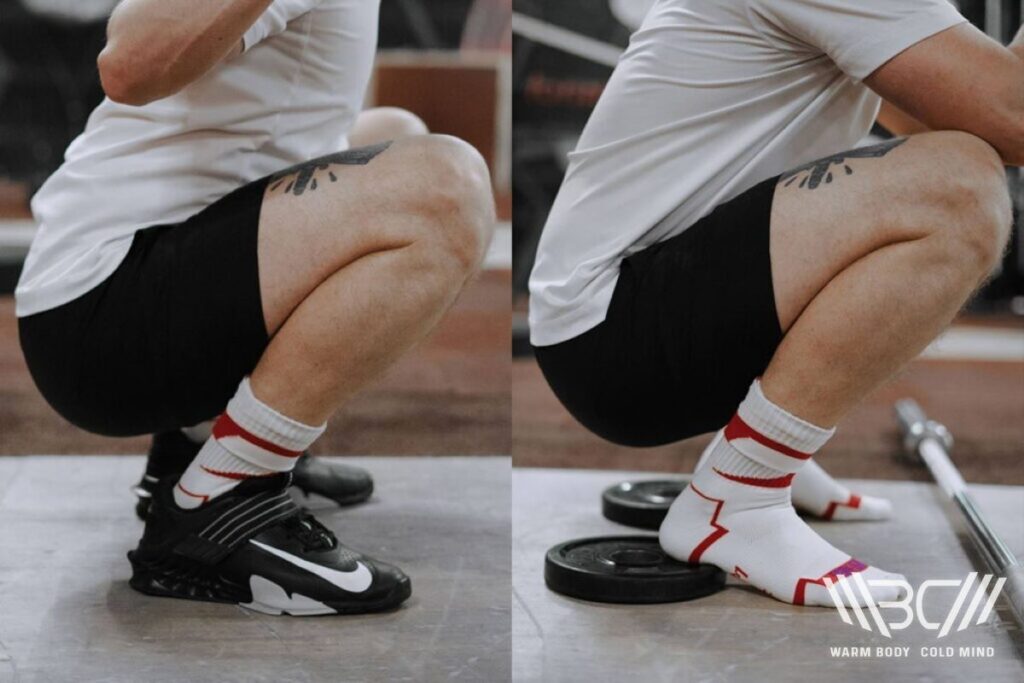
They’re used at all levels from amateur to pro. As mentioned earlier, most good weightlifting shoes have a heel stack height of roughly 21-2 4mm or roughly 0.8-0.95 inches.
There are also taller stack variants that might be better suited for taller athletes, but this is the default for most brands. The only downside to weightlifting shoes is the upfront cost. If they’re not something you’re going to use regularly, it might be hard to justify the cost, which is how DIY solutions like using a pair of plates started popping up.
2. Squat Wedges/Elevated Platforms
Apart from weightlifting shoes, you can also use squat wedges, which are essentially angled platforms. Some squat machines come with pre-built squat wedges, and there’s also the mobile/carry variant such as these Rogue Squat Wedges. These can be a cheaper pickup than a pair of weightlifting shoes and they’re a good alternative if the gym you’re working out in doesn’t allow you to squat standing on plate pairs.
Otherwise, any elevated platform you can think of can work as long as it’s stable and gives you the right angle. A regular wooden block, yoga blocks, or even something like a gym floor tile can do the trick. Remember to aim for about 20-25 mm AKA 8-10 inches of added heel height to achieve the desired effect.
3. Mobility Training
As discussed throughout the article, the main goal of squats with heels on plates is to alter the joint kinematics, allowing you to more comfortably go for deeper squats. However, even this can be just a band aid solution. If you find it troublesome to bend in and out of regular squats, even without added weight for resistance, consider improving your mobility through specialized training.
This isn’t just about achieving deeper and more comfortable squats. Higher joint mobility will easily translate into daily movements such as sitting up and down, bending over and reaching up, climbing up and down stairs, etc.

Pro Tip:
As always, there are plenty of mobility exercises you can do at home with a simple YouTube tutorial, but it’s preferable to do this with a coach/trainer who is an expert in mobility and flexibility and can give you an accurate assessment of your current level and necessary measures to take.
Conclusion
Now you know how squatting with plates under heels works and why some people prefer it over squatting on a flat surface. In summary, the elevated posture can help keep your upper body straight and reduce the load on your spine, while allowing you to squat deeper more comfortably.
You can think of squats with heels on plates as essentially an easily accessible and budget-friendly version of using weightlifting shoes. It’s easy to apply and is customizable too if you have plates of various thicknesses to choose from.
We’d love to hear from you as well. Have you tried squatting with plates or another elevated surface? What differences did you notice? Leave a comment letting us know and remember to follow us on social media if you like this type of content.
References:
- “Achilles tendinitis” Mayo Clinic https://www.mayoclinic.org/diseases-conditions/achilles-tendinitis/symptoms-causes/syc-20369020 (accessed Mar. 5, 2024).
- E. A. Harman, R. M. Rosenstein, P. N. Frykman, G. A. Nigro, “Effects of a belt on intra-abdominal pressure during weight lifting,” Medicine & Science in Sports & Exercise vol. 21, no. 2 (1989), 186-190.
- Hayley Legg, Mark Glaister, Daniel J. Cleather, Jon E. Goodwin, “The effect of weightlifting shoes on the kinetics and kinematics of the back squat,” Journal of Sports Sciences vol. 35, no. 5 (2016), 1-8.
- Jesse M. Charlton, Connor A. Hammond, Christopher K. Cochrane, Gillian Hatfield, Michael Hunt, “The Effects of a Heel Wedge on Hip, Pelvis and Trunk Biomechanics During Squatting in Resistance Trained Individuals,” The Journal of Strength and Conditioning Research vol. 31, no. 6 (2016), 1.
- Mark Sayers, Caroline Bachem, Pascal Schütz, William R. Taylor, Renate List, Silvio Rene Lorenzetti, Seyyed Hamed Hosseini Nasab, “The effect of elevating the heels on spinal kinematics and kinetics during the back squat in trained and novice weight trainers,” Journal of Sports Sciences vol. 38, no. 4 (2020), 1-9.
- “Vertebral Column” Encyclopedia Britannica https://www.britannica.com/science/vertebral-column (accessed Mar. 5, 2024).
- Zhenghui Lu, Xin Li, Rongrong Xuan, Yang Song, István Bíró, Minjun Liang, Yaodong Gu, “Effect of Heel Lift Insoles on Lower Extremity Muscle Activation and Joint Work during Barbell Squats,” Bioengineering (Basel) vol. 9, no. 7 (2022), 301.
- All photos are made by WBCM Media team.
Author: Sergii Putsov
PhD in Sport Science, Olympic weightlifting, Strength & Conditioning coach and fitness expert
Sergii Putsov is a professional weightlifter with over 20 years of experience and multiple national medals. He was a member of the National weightlifting team, competing in the 94 kg weight class. Sergii holds a master’s degree in Olympic & Professional Sport Training and a Ph.D. in Sport Science. After his athletic career, Sergii transitioned into coaching and is now responsible for designing training programs, writing blog articles, providing live commentary for international weightlifting competitions, and hosting sport and fitness seminars worldwide.


